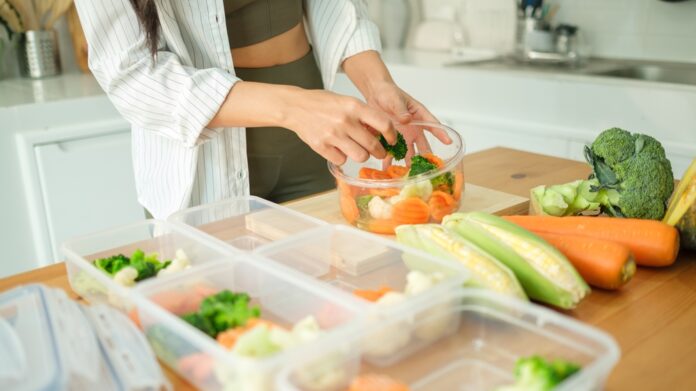In today’s fast-paced world, finding time to cook nutritious meals every day can be challenging. Meal prepping is an effective strategy to ensure you have healthy, delicious meals ready to go throughout the week. By dedicating a few hours once or twice a week, you can save time, reduce stress, and maintain a balanced diet.
Why Meal Prep?
Meal prepping involves preparing meals or meal components in advance, allowing for quick assembly during busy weekdays. It helps improve your diet quality and nutritional awareness, leading to better health outcomes. Meal prepping can save you time and money while reducing food waste, making it a sustainable habit for a healthier lifestyle.
Getting Started with Meal Prep
1. Plan Your Meals
Start by deciding which meals you want to prepare for the week. Consider your dietary needs, preferences, and schedule. It’s helpful to begin with simple recipes and gradually build a meal prep routine. Starting small and repeating meals can reduce complexity and make meal prep manageable.
2. Create a Grocery List
Once you’ve planned your meals, make a detailed grocery list. This ensures you buy only what you need, helping to prevent overbuying and reduce food waste. Making detailed lists and deciding which ingredients to prepare from scratch versus purchasing pre-made can streamline your shopping.
3. Invest in Quality Containers
Use airtight, microwave-safe containers to store your meals. This keeps your food fresh and makes reheating easy. Choosing the right storage containers is crucial for food safety and convenience.
4. Set Aside Time for Meal Prep
Designate specific times during the week for meal prepping, such as Sunday afternoons or Wednesday evenings. Setting aside specific time periods makes meal prep a consistent part of your routine.
Meal Prep Ideas for a Healthy Week
Overnight Oats
A quick and nutritious breakfast option. Combine oats with milk or a dairy-free alternative, chia seeds, and a sweetener like maple syrup. Add fruits or nuts for extra flavor. Refrigerate overnight, and it’s ready to eat in the morning. Overnight oats provide a healthy breakfast that’s ready when you are.
Chia Seed Pudding
Chia seed pudding is rich in fiber, protein, and healthy fats. Mix chia seeds with almond milk and a sweetener, then refrigerate overnight. Top with fresh berries or granola for added texture. It’s a versatile option for breakfast or a snack.
Mediterranean Quinoa Salad
Combine cooked quinoa with chopped vegetables like cucumber, tomatoes, and bell peppers. Add feta cheese and a lemon-olive oil dressing. This salad is perfect for lunch and keeps well throughout the week.
Chicken Teriyaki Stir-Fry
Prepare a batch of chicken teriyaki stir-fry with vegetables like broccoli, bell peppers, and onions. Serve with brown rice or quinoa. It’s ideal for meal prepping during a busy week.
Salmon Meal Prep Two Ways
Variety keeps meal prep interesting. Try seasoning salmon fillets differently—one with a garlic paprika rub and another with a balsamic soy glaze. Pair with roasted vegetables. Preparing salmon in two ways adds diversity to your meals.
Black Bean and Corn Salad
Mix black beans, fresh corn, red bell pepper, cilantro, and a lime dressing for a refreshing salad. This vibrant salad is flavorful and versatile as a side dish or a light lunch.
Tips for Successful Meal Prepping
Balance Your Meals
Ensure each meal includes a good source of protein, complex carbohydrates, and healthy fats. Maintaining a balance of nutrients is essential for a healthy diet.
Keep It Simple
Stick to recipes with fewer ingredients and steps, especially when you’re starting out. Beginning with simple recipes helps build confidence and makes meal prep more enjoyable.
Use Versatile Ingredients
Choose ingredients that can be used in multiple dishes. For example, grilled chicken can be added to salads, wraps, or grain bowls. Versatile ingredients make meal prep more efficient and cost-effective.
Proper Storage
Store your meals properly to maintain freshness. Most prepped meals last 4-5 days in the refrigerator. Using appropriate containers ensures your food stays fresh and safe to eat.
Freeze for Later
If you prepare meals in bulk, freeze portions for later use. Soups, stews, and casseroles freeze well and can be a lifesaver on busy days.
Meal Prep Recipes to Try
Seared Salmon with Green Peppercorn Sauce
A flavorful dish that’s quick to make. Pair seared salmon with a tangy green peppercorn sauce and serve with steamed vegetables or a salad. It’s a nutritious option that fits well into a heart-healthy meal plan.
Cod with Tomato Cream Sauce
Cod fillets cooked in a rich tomato cream sauce make for a delicious dinner. Serve with whole-grain pasta or quinoa. This satisfying meal is great for meal prep and reheats well.
Heart-Healthy Meal Plan
Incorporate heart-healthy recipes into your meal prep. Focus on fruits, vegetables, whole grains, lean proteins, and healthy fats. A structured meal plan can improve heart health and aid in weight management.
Make Meal Prep Enjoyable
Meal prepping doesn’t have to be a chore. Put on your favorite music or podcast while you cook. Preparing food can be made enjoyable by incorporating activities you like.
Experiment with new recipes and flavors to keep things interesting. Variety prevents boredom and keeps you motivated to stick with meal prepping.
Conclusion
Meal prepping is an effective way to ensure you eat healthy, home-cooked meals throughout the week. It saves time, reduces stress, and helps you stay on track with your nutritional goals. Start small, keep it simple, and gradually build a routine that fits your lifestyle. Happy cooking!


